#kishi nobusuke
Text
Sun Myung Moon, anti-communism and the Japanese far right (1974)

▲ In 1974 Sun Myung Moon spent $350,000 on radio, TV, and other advertising to promote a major evangelical rally at Madison Square Garden to stimulate new support in the East. The event was held September 18 and attracted a large crowd of curious onlookers, hostile fundamentalists, leftist demonstrators, policemen, and atheists.
an extract from Korean Evangelism (1974)
The full article is available on WIOTM here:
https://whatisonthemoon.tumblr.com/post/720614563491561472/korean-evangelism-1974
... Reverend Sun Myung Moon, achieve notoriety when he announced last year in full page newspaper advertisements across the United States that President Nixon had been put into office by God and could be removed only by His will. Sun Myung Moon’s National Prayer and Fast Committee stuck by Nixon to the bitter end. (Thus did Moon inevitably meet Rabbi Korff, who then obligingly spoke before a Moon-affiliated organization on “The Fact of Communism and America’s Future.”10
The Reverend Moon is a new phenomenon in America, but not in Asia where his following now totals nearly a million people, concentrated in Korea, Japan, and Taiwan. Moon found his calling back in 1936 when Jesus Christ approached him on a mountainside and asked him to devote himself to God’s service as an evangelist. Moon waited until 1954, however, before organizing a new world religion, the Genri Undo, or Unification Church, formerly called the Holy Spirit Association for the Unification of World Christianity. (Detractors claim he got off to a slow start because of three arrests for sexual offenses. [1946, 1948 and 1955]) 11
Despite his wide following in Asia, and his whirlwind American tour last year, Moon has not attracted a wide following in the United States, where he can claim only about 25,000 supporters. Now that he can no longer lead the campaign to save President Nixon, Sun Myung Moon has fallen back on more traditional approaches. Recently he spent $350,000 on radio, TV, and other advertising to promote a major evangelical rally at Madison Square Garden to stimulate new support in the East. The event was held September 18 and attracted a large crowd of curious onlookers, hostile fundamentalists, leftist demonstrators, policemen, and atheists.12
Once described as a “Korean-style Elmer Gantry” but preferring the title, “God’s Hope for America,” the Reverend Moon preaches about the many dangers of communism along with his personal interpretations of the Bible. One Japanese source describes his movement as “less a religion than an anti-communist front group.” Rabbi Mark Tannenbaum of the American Jewish Committee observes that “Moon seems to be exploiting the emotional power of religion in order to indoctrinate his anti-communist ideology. The tragedy is that so many young people respond to this emotional appeal.” And he has predictably drawn fire from concerned clergymen, in the words of one, for his “seemingly cozy relationships with the dictatorial Park Chung Hee regime in South Korea.” In reply to these charges a Moon spokesman insists, “Many religions acknowledge the threat of Communism.”13
Sun Myung Moon can afford to lavishly finance his propaganda activities. Time estimated his personal fortune at $15 million, derived from investments in a tea company, titanium mines, retreat ranches, pharmaceutical firms, and shot gun manufacturers. Recently his Unification Church purchased several estates and an old seminary in New York for about $3 million. The question remains: is this vast international effort just a personal undertaking?14
Moon and his close associates are predictably silent, but disturbing evidence is emerging of his church’s close ties to anti-communist political organizations with less spiritual ends.
For example, Moon’s closest associate and English interpreter, Colonel Bo Hi Pak (“God’s Colonel”), formerly a Korean military attaché, has strong links to both Korean intelligence and the American CIA. He heads the Korean Cultural and Freedom Foundation (KCFF) which operates “Radio Free Asia,” possibly an outgrowth of a project by the American organization, Committee for a Free Asia (now the Asia Foundation), funded by the CIA. KCFF also conducts propaganda operations in Vietnam. Its legal counsel is none other than Robert Amory, Jr., former deputy director of the CIA. In 1962 Amory almost became head of the Asia Foundation (he was turned down to avoid blowing the CIA cover); now he is a law partner in Corcoran, Roley, Youngman & Rowe, a firm which has long handled the legal work for CIA proprietaries.15
The possibility of CIA involvement with a right-wing movement now entering the United States is frightening enough. But just as troubling are the close financial ties of Moon’s church to the world of wealthy neo-fascist Japanese capitalists, who seek not only a rollback of Communism but a new “Greater Asia” under the Emperor, based on the integration of Korea and Formosa into the Japanese orbit. In Japan, the chief financial backer and organizer of the Genri Undo is Sasagawa Ryoichi, the 75 year old former Class A war criminal. Back in 1931, with the notorious Kodama Yoshio, he formed a chauvinist patriotic party and intelligence organization that siphoned off enormous wealth from China during the Japanese occupation and ultimately provided much of the postwar financial backing for the ruling Liberal Democratic Party. In 1939 he set in motion the negotiations leading to the Tripartite Pact between Japan, Germany, and Italy; three years later he was elected to the Diet on an ultranationalist platform of southward expansion. His stint in the Sagumo Prison after World War II for suspected war crimes set back his career only a short while, for he and fellow inmates like Kodama Yoshio and former Prime Minister Kishi Nobusuke used their influence and time to plan the resurrection of the postwar Japanese Right.16
Both Sasagawa and Kodama still exercise enormous influence in Japan, and are described as “kuromaku” – powers behind the throne. The New York Times description of Kodama applies identically to Sasagawa: “Yoshio Kodama is among the most powerful men in Japan. He was instrumental in founding the nation’s governing party, he has had a hand in naming several Premiers, he has settled dozens of disputes among top businessmen. He also commands the allegiance of Japan’s ultra-right wing and has strong influence over the yakuza, or gangsters, of the underworld here.”17 Both are dedicated to restoring the power of the Emperor and crushing opposition to the Right.
Sasagawa, as president of the Japan-Indonesia Association and Japan-Philippine Association, both reminiscent of the prewar imperialist South Seas Association, has helped to spearhead the southward Japanese commercial advance in Asia. He funded the anti-Sukarno forces which organized the Indonesian coup d’état of September 30, 1965; he likewise supported the Lon Nol faction which overthrew King Sihanouk in Cambodia in 1970, and arranged for Japanese economic aid to prop up the new government. Currently he is active in strengthening Japanese ties with the strategic Arabian peninsula, through his Japan-Oman Association. Most significantly, Sasagawa has long been a leading light in the Asian Peoples’ Anti-Communist League, and was behind the recent organization of the World Anti-Communist League. With his vast fortune acquired from shipbuilding, gambling, and organized crime, Sasagawa not only influences the Japanese government but acts as a powerful force in all of “Greater Asia.” His support of Moon’s Unification Church is thus just one of many elements in the constellation of interlocking activities surrounding the Japanese, Asian, and world right-wing movements which still thrive in many forms.
...
Sources
William Turner, Power Out the Right (Berkeley: Ramparts Press, 1971); Jane Kramer, “Letter From Guyana,” New Yorker (September 16, 1974), pp. 100-128; Cheddi Japan, The West on Trial (London, 1966), p. 307.
Footnotes
...
10. On Korff’s close relationship to Moon, see Washington Post, July 25, 1974; New York Post, September 16, 1974. Rabbi Korff’s latest project is to force Congress to impose severe curbs on the media, which he blames for President Nixon’s downfall (Washington Post, August 17, 1974).
11. Daily News (New York), September 13, 1974; Christianity Today, March 1, 1974, pp. 101-02; AMPO, Winter, 1974, p. 43; New York Times, September 16, 1974; Village Voice, September 12, 1974. Estimates vary as to the size of Moon’s worldwide following; Moon’s chief associate put the figure at over two million (New York Times, September 16, 1974).
[ Ewha Womans University sex scandal and Sun Myung Moon as told in the 1955 newspapers
Sun Myung Moon found guilty in 1955; started two year jail sentence ]
12. New York Times, September 16, 1974 (including full-page advertisement on p. 40); Daily News, September 13, 1974; New York Times, September 19, 1974; UPI dispatch, September 19, 1974; Wall Street Journal, September 20, 1974.
13. AMPO, Winter, 1974, p. 43; New York Post, September 16, 1974. Moon’s organization has created a number of secular anti-communist front groups including the International Federation for Victory over Communism, the World Freedom Institute, and the Freedom Leadership Foundation. The South Korean Government sends its civil servants to an anti-communist indoctrination center in Seoul operated by the Church (Village Voice, September 12, 1974; New York Times, September 17, 1974).
14. Time, October 15, 1973, pp. 129-30; Daily News, September 13, 1974; Christianity Today, March 1, 1974, pp. 101-02. Moon’s church is worth “far more” than Moon’s personal $15 million (New York Times, September 16, 1974).
15. Village Voice, September 12, 1974; Steve Weissman and John Shoch, “CIAsia Foundation,” Pacific Research, September~October, 1972. One of Corcoran’s earliest projects for the CIA was representing Chennault’s Civil Air Transport, now Air America. CIA officials deny any ties to Moon’s Unification Church, but funding of the Church remains mysterious (Wall Street Journal, September 20, 1974).
16. AMPO, Winter, 1974, p. 43; New York Times, July 2, 1974; Don Kurzman, Kishi and Japan (Astor-Honor).
17. New York Times, July 2, 1974. Sasagawa has been implicated in recent Japanese election irregularities. See Far Eastern Economic Review, September 6, 1974, p. 28.
18. AMPO, Winter, 1974, pp. 43-5.
__________________________________
Sun Myung Moon organization activities in Central & South America
1. Introduction
2. ‘Illegal Aliens Joining Moonies’ – The Pittsburg Press
3. Moon’s ‘Cause’ Takes Aim At Communism in the Americas – Washington Post
4. Moon in Latin America: Building the Bases of a World Organisation – Guardian
5. Guatemala
6. Nicaragua
7. Honduras
8. Costa Rica
9. Bolivia
10. Uruguay
11. Paraguay
12. Brazil
__________________________________
Politics and religion interwoven
Contents
1. Shadows on Rev. Moon’s beams. Politics and religion interwoven.
Chicago Tribune – Sunday, November 10, 1974
2. Howling at the Moon – Chicago Reader Weekly Friday, November 22, 1974
3. Messiah Sun Myung Moon on the Run
4. The Unification Church: Christian Church or Political Movement?
– by Wi Jo Kang (1976)
5. Moon’s Sect Pushes Pro-Seoul Activities – by Ann Crittenden
. The New York Times, May 25, 1976
6. Panel Told Seoul Used Followers of Sun Myung Moon for Protests
. The New York Times, June 7, 1978
7. Unification Church Protected by the Regime in South Korea
. 週刊ポスト Shūkan Post magazine October 15, 1993
8. American Dynasty: Aristocracy, Fortune, and the Politics of Deceit
in the House of Bush – by Kevin Phillips (2004)
9. Missing Pieces of the Story of Sun Myung Moon
– by Frederick Clarkson (2012)
10. Sun Myung Moon was nominated for the Nobel Peace Prize in 2002.
It seems the manufacture of Moon’s ‘Autobiography’ was an attempt to promote Moon for the Nobel Peace Prize. However, the publisher of the book was jailed for four years for fraud – for buying books from stores to push the book up the best-seller list, and for other financial crimes.
11. ‘Privatizing’ Covert Action: The Case of the Unification Church
Dr. Jeffrey M. Bale Lobster #21. May 1991
Introduction
__________________________________
The Sun Myung Moon church – Jane Day Mook & Hiroshi Yamaguchi (1974 & 1975)
3 notes
·
View notes
Link
Two brief excerpted passages:
In 1945, Kishi was jailed by the US occupation forces as a Class A war criminal for his activities running the Japanese colonies in Manchuria and northern Korea during the war. After being freed by US authorities in 1951, he rose through the ranks of the LDP to become prime minister, when he presided over the renewal of the US-Japan security treaty in 1960. According to one report, Kishi began visiting the Unification Church in 1970 after building ties with its International Federation for Victory Over Communism.
As the Japanese press kept digging after the assassination, it soon became clear that Abe had inherited his grandfather’s love for the Moonies. Clips soon surfaced of Abe delivering a video message in 2021 to the Universal Peace Federation, an arm of the Unification Church, praising its focus on “family values” and telling members that “we should be wary of so-called social revolutionary movements with narrow-minded values.” The tabloid Nikkan Gendai compiled a list of 112 LDP lawmakers, including 34 current and former cabinet ministers, who were closely associated with the church and the anticommunist Federation. Many Japanese were shocked in August when Prime Minister Fumio Kishida appointed a new cabinet that includes over 20 lawmakers linked to the Moonies. All of this resonated strongly with the Japanese public.
For years, the Unification Church and its zealous followers had been accused of using heavy-handed tactics and intimidation to force donations from church members. Many Japanese were sympathetic to the assassin’s complaint that his mother, a fervent believer in Reverend Moon, handed over to the church much of her family’s savings – over $750,000 in total. In July, a network of 300 lawyers representing families of church members said it has received 34,000 complaints related to “lost” money totalling more than 120 billion yen (about $890 million) since 1987.
The church’s political campaigns in support of Abe and the LDP have further colored his image. The Mainichi newspaper reported that the Moon-backed International Federation for Victory over Communism has distributed videos supporting the constitutional amendments that would alter the peace constitution, a lifelong goal of Abe’s. During the fall, Japan’s ANN reported that records had been found of Sun Myung Moon “telling followers in 1989 that the Abe faction of the LDP was the center of their efforts to gain influence over Japanese politics.”
As Japanese digested the revelations about the Unification Church, opposition grew to Kishida’s plans for a state funeral for Abe. Polls conducted in August by Kyodo News found that 53 percent of Japanese wanted the state funeral cancelled and that a stunning 85 percent said politicians should cut their ties with the Unification Church and its front groups. When the state funeral finally took place on September 27th, with Vice President Kamala Harris attending for Biden, thousands of people protested in the streets.
. . .
Outside of an initial report in the Washington Post, however, the US press has stayed completely away from reporting on Abe’s ties to the Unification Church. That is strange in part because the Moonies have been controversial in the United States since the 1970s, when it was at the center of a congressional bribery scandal known as Koreagate. Starting in the 1980s, the Moon empire has had a profound impact on US politics through its ownership of the Washington Times, which was created as a right-wing alternative to the Post. But Abe and the LDP, of course, were hardly alone in their admiration for the Moonies.
Over its history, the church has cultivated relationships with several US presidents, including Richard Nixon, Ronald Reagan and George H.W. Bush. In September 2021, Trump was paid a princely sum to praise the Unification Church for a virtual event in Seoul that was organized by Hak Ja Han Moon, Sun Myung Moon’s widow and the co-founder of the church’s Universal Peace Federation (later, police said “the suspect decided to kill Abe after watching a video of that event.”) In Seoul, meanwhile, Moon’s Universal Peace Federation organized a public memorial for Abe on August 12 that was attended in person by former UN secretary General Ban Ki-moon and Harry Harris, the retired admiral and former US ambassador to Seoul. Both Trump and Mike Pence sent messages to the gathering, with Pence calling on world laders to take action against “religious persecution,” the Moon-affiliated Segye Ilbo reported.
Listen to my hour-long interview on Shinzo Abe and US backing of the LDP. “Who Was Shinzo Abe And Why Was He Assassinated?” on WORT/Madison. For a deep dive into Abe’s attempt to rewrite Japan’s wartime history, read this interview with the brilliant historian Alexis Dudden in The New Yorker. And for a compendium of essays about Abe’s legacy in Japan, see this analysis in Asia-Pacific Journal from David MacNeill.
With that as background, let’s turn back to Abe. As I’ve long argued, Abe’s LDP is the most obsequious pro-American political party in the world. Since coming to power in 1955, it has been seeking to transform Japan into a military power and do away with Article Nine of its US-imposed constitution, which rejected war as a means to settle international disputes. In 2015, after years of relentless pressure from the CIA, the Pentagon, and Washington’s think tanks, Abe pushed through the most important change to the constitution by turning Japan, in my view, into “America’s proxy Army.”
Full article: https://timshorrock.com/japan-is-americas-new-proxy-army-thanks-to-pm-abe/
#tim shorrock#ffwpu#family federation for world peace and unification#unification church#politics#unification church in japan#right-wing politics#religion#japan#shinzo abe#kishi family#abe family#japanese politics#ldp#liberal democratic party#cia#yoshio kodama#kodama#nobusuke kishi#kishi nobusuke#Ryoichi Sasakawa#sasakawa#kishi
0 notes
Text
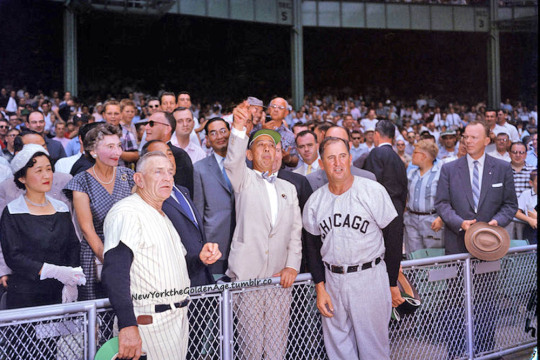
Wearing a Yankees cap, Japanese Prime Minister Nobusuke Kishi throws out the first ball, June 23, 1957, at Yankee Stadium. He watched the first game of a double header between Chicago and the Yankees. Left to right, unidentified lady, Mrs. Casey Stengel, Casey Stengel, Nobusuke Kishi, Al Lopez, Manager of White Sox.
Photo: Ray Howard for the AP via the Wall St. Journal
#vintage New York#1950s#Ray Howard#NY Yankees#Yankee Stadium#Nobusuke Kishi#June 23#23 June#Chicago White Sox#baseball#color photography#diplomacy
48 notes
·
View notes
Quote
Slain former prime minister Shinzo Abe was the son of a foreign minister, and grandson of another prime minister, Nobusuke Kishi. Grandpa Kishi was a member of the wartime junta and was arrested by the Americans as a suspected war criminal. But he escaped the hangman and in the mid-1950s helped found the Liberal Democratic Party (LDP), which has ruled Japan ever since. Some people joke Japan is a one-party state. It isn't. But it's reasonable to ask why Japan continues to re-elect a party run by an entitled elite, which yearns to scrap American-imposed pacifism, but has failed to improve living standards for 30 years.
Rupert Wingfield-Hayes, ‘Japan was the future but it's stuck in the past’, BBC
#BBC#Rupert Wingfield-Hayes#Japan#Shinzo Abe#Nobusuke Kishi#World War II#Liberal Democratic Party#LDP
21 notes
·
View notes
Text
Rip bozo
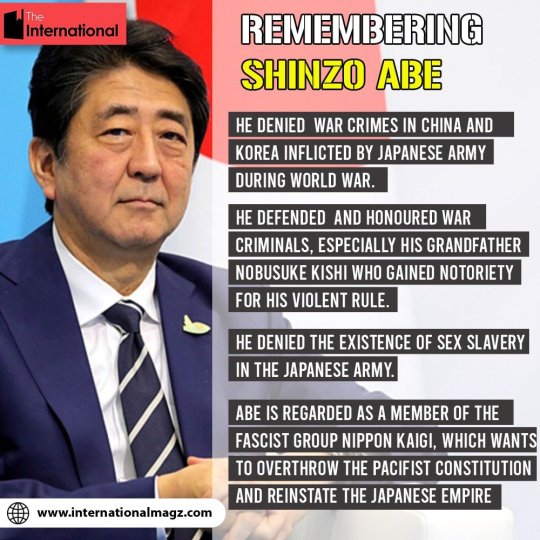
#shinzo abe#japan#nippon#nippon kaigi#nobusuke kishi#ww2#japanese imperialism#fascism#communism#socialism#leftism#anti capitalism#class consciousness#class conflict#capitalism#classwar
30 notes
·
View notes
Video
youtube
【What They Told】-021- The Comment From Nobusuke Kishi (1982)
0 notes
Text
On Kawara (1932-2014)
On Kawara, a Japanese born artist based in New York, became a household name after gaining sensational response from his contemporaries for his graphic images. He came to stand for the new generation of social realism which was determined to confront the reality of Japan’s postwar society with a vision unclouded by the older generations' nostalgia for the prewar past.
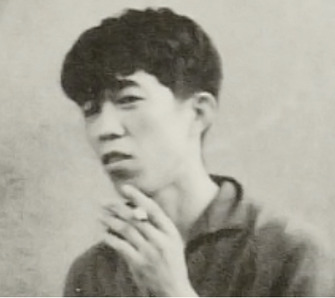
The Bathroom series, 1953
In these pencil sketches, the bathroom is a distorted, claustrophobic space filled with scenes of murder, dismembered bodies and Matricidal images. The naked bodies of wide-eyed men and women are cut into pieces with various body parts floating inside a neatly tiled bathroom.
It is not difficult to see that Kawara's drawings are associated with the tumultuous state of the Japanese nation during his time. A close examination of the conflict betwen the subject of brutality and the formal strategy of indifference (the subjects seem indifferent to their their own murder) allows us to infer that the disrupted representation of Kawara's Bathroom series echoes the psychological effect of the nuclear explosion and its social aftermath. Some images can be seen below.


#The Decoy#—the humiliation of occupation#collusion in a neighboring war#political entrapment#and social inequality#though some of the works are highly allegorical.#Some of his works are shown below.#The unattractive head depicts Kishi Nobusuke#who became prime minister in 1957 and negotiated the renewal of the security treaty in 1960. Kishi was imprisoned as an accused war crimina#but never brought to trial.#In several works#Ishii set his sights on specific targets#such as war profiteers in his untitled painting below.#japan#japanese history#art#literature#tumblarians#writers#japanese#japanese culture#japanese art history#art history#art exhibition#illustration#contemporary japanese art#post war#art revolution#world war 2#world war second
0 notes
Text
Nobusuke Kishi is one of the funniest evil people I’ve ever seen, he’s like a stereotype of an evil corporatism official so overdone that even other people would think you’d be lying.
26 notes
·
View notes
Text
Things on my mind today because school research:
(Tldr: The Japanese government is dominated by a single party founded and maintained by a semi-secret society of fascists, former war criminals, ultranationalists, yakuza, cultists, and billionaires; brought together by CIA anti-communism efforts.)
Japan has had one political party in power almost continuously since 1955, only stepping down for a total 4 non-consective years: the broadly conservative Liberal Democratic Party
The LDP was formed by a merger between the Liberal Party and the Democratic Party. Instrumental in this was politician Nobusuke Kishi, a Democratic Party official formerly high up in the Liberal Party. He would represent the LDP as Japan's Prime Minister from 1957-1960
Previously, Mr. Kishi had been a minister in the government of Imperial Japan, considered a protégé of General Tōjō. Post-war he was imprisoned by the Allied Forces under charges of "class A" war crimes for being a major planner of the Japanese war effort. Other fascists held in the same cell were ultranationalist yakuza boss Yoshio Kodama, anti-communist millionaire and billionaire-to-be Ryōichi Sasakawa, and former Yomiuri Shinbun (Japan's preeminent conservative newspaper) owner Matsurarō Shōriki. The bonds they formed in Sugamo prison would become a lifelong secret society influencing Japanese politics.
All four were released from prison without ever facing trial for their war crimes charges. Why? The CIA was very concerned about communist influence in East Asia, and figured letting a handful of fascists go free would give them a very useful tool to suppress socialist movements in Japan.
Mr. Shōriki went on to found Japan's first commercial television broadcaster, Nippon TV. A few years later he became the first chairman of Prime Minister Kishi's new Japanese Atomic Energy Commission. Declassified documents have revealed that he did both those things because the CIA suggested that Japan should have a pro-US TV channel across the nation, and wanted to bring Japan into the sphere of influence of US nuclear technology
Mr. Kodama again became a leader in Japanese organized crime, bringing together a coalition of ultranationalist paramilitaries and yakuza families all committed to a shared right-wing ideology. With his thugs he broke strikes, beat protestors, threatened journalists, managed bribes, and laundered a ton of money, all in service of the LDP and the CIA. At least, until 1976, where he was publicly outed as the main facilitator for Lockheed Martin bribing its way into major Japanese government contracts to the tune of millions of dollars.
Mr. Sasakawa got mega rich off of rebuilding Japan's wartorn infrastructure and establishing a gambling industry. He called himself "the world's richest fascist." He funneled his profits into international political interest groups, like the World Anti-Communist League he founded with his buddies Syngman Rhee of South Korea and Chiang Kai-Shek of Taiwan.
Mr. Sasakawa's activist groups attracted the attention of Korean cult leader Sun Myung Moon, the founder of the Unification Church. The UC's eccentric adaptation of Christianity has a very political theology, and before anything else it's devoutly anti-communist. Mr. Sasakawa became a major financial supporter of the Church, and helped establish its presence in Japan. He connected Mr. Moon with Mr. Kishi, bringing him into the extended Sugamo circle.
Even after his reign as PM, Mr. Kishi remained a central figure in LDP decision-making. He and Mr. Sasakawa developed close ties between the cult and the LDP, and made sure they were regularly maintained. The LDP used Moonies as unpaid campaign assistants, and in exchange Japan became the primary source of the UC's financial support. The UC helped the LDP spread, and the LDP helped the UC spread, growing both.
When Mr. Sasakawa died, his son-in-law Shintarō Abe became the main ambassador of the UC-LDP alliance, which was stronger than ever. When Shintarō Abe died, his son Shinzō Abe (Mr. Kishi's grandson) took over managing UC-LDP affairs. The younger Mr. Abe became the LDP's Prime Minister of Japan from 2007-2008, had a second term from 2012-2020, and faced the consequences of his actions in 2022
Ps: If I've said anything incorrect or unsupported here do let me know, I'm working on an essay.
2 notes
·
View notes
Text
Even as some of Moon’s most famous initiatives, such as the Washington Times newspaper and media ventures in many other countries, lost money, the church could count on its Japanese arm to produce a strong revenue flow based primarily on what it called “spiritual sales.”
Church members in Japan “would scan the obituaries and knock on people’s doors and tell them that ‘your dead loved one has communicated with us and they want you to go to your bank and send money to the Unification Church so that your loved one can be elevated in the spirit world,’ ” Steve Hassan, a onetime Unification Church member who became a mental health counselor and author of books about destructive cults, said Saturday.
Despite the church’s roots in Korea, it was Japan that traditionally provided as much as 70 percent of the church’s wealth, according to historians who have studied the church. A former high-ranking Japanese church member once told The Post that Moon’s organizations had brought $800 million from Japan into the United States from the mid-1970s to the mid-80s.
“Moon sent bags of cash, big fat bags, stacks and stacks of hundreds, from Korea and Japan to Manhattan Center,” one of the church’s primary properties in New York City, a former Unification executive, Ron Paquette, told The Post in 1997. “Whenever we asked where the money was coming from, the answer was it just came ‘from Father,’ ” the term church members used for Moon.
[...]
Akihiko Kurokawa, the leader of a small political party in Japan, the NHK Party, said on a TV broadcast last month that the Unification Church was “an anti-Japanese cult” and blamed Abe’s grandfather, former prime minister Nobusuke Kishi, for the church’s initial move into Japan in 1958. Moon started his first newspaper in Japan in 1975 and brought his signature mass marriages of followers to the country soon thereafter.
In Moon’s theology, his native Korea is the “Adam” country, home of a master race destined to rule the world, and Japan is the “Eve” country, subservient to Korea, Hassan said. The Unification Church taught that Eve had had sexual relations with Satan, leading mankind to fall from grace, with Moon now appointed to bring humanity to salvation.
Saw a claim that Japanese Moonies are required to tithe 3x the amount Koreans and Americans are, haven’t any corroboration though.
60 notes
·
View notes
Text
1960 El primer ministro japonés, Nobusuke Kishi, es evacuado del edificio tras haber sido apuñalado varias veces por un fanático de derecha.
Sobrevivió al ataque y murió en 1987. Es interesante que en la Segunda Guerra Mundial fue Ministro de Economía en los territorios chinos ocupados (Manchuria) y luego Ministro de Industria y Comercio en el gabinete de tiempos de guerra de Hideki Tojo. No pudo evitar ser responsabilizado después de la guerra, estuvo en cautiverio estadounidense durante casi 3 años, donde hizo una alianza de por vida con el posterior líder yakuza, Josió Kodama. Regresó a la política en 1952 y fue elegido Primer Ministro en 1957.

2 notes
·
View notes
Link
Nobusuke Kishi was known as a monster, responsible for the deaths of thousands, and as a friend of Sun Myung Moon
How Sun Myung Moon bought protection in Japan
Top Japanese ex-UC leader, Yoshikazu Soejima, interviewed
1 note
·
View note
Photo
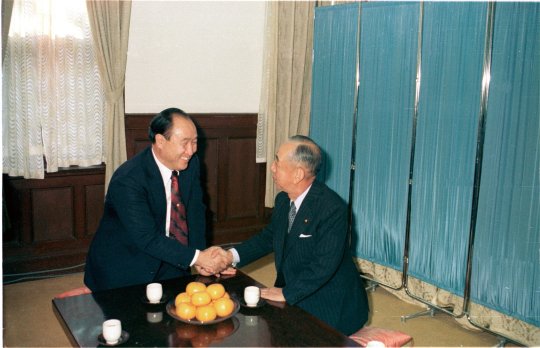
Kishi Nobusuke shaking hands with Unification Church leader Rev. Sun Myung Moon (1973).
#kishi nobusuke#kishi#nobusuke kishi#sun myung moon#1973#unification church#unification church in japan#politics
0 notes
Text
In France and Germany, it would have been unthinkable for a cabinet member of the Vichy government or the Nazi regime to become a national leader after the war. This was not the case in Japan with Kishi Nobusuke, who served as Minister of Trade and Industry in the wartime Tōjō cabinet. Astonishingly, Kishi became Prime Minister in February 1957. Similarly, Emperor Hirohito's war guilt and responsibility were never questioned at the Tokyo War Crimes Tribunal, despite the abundance of crystal-clear evidence. In this article, I discuss how closely the U.S. and Japanese governments have been collaborating for the last 78 years since the end of the Asia-Pacific War in August 1945, supporting one another to whitewash each other’s war crimes and responsibility in every possible way.
3 notes
·
View notes
Text
1960-Michiko Kanba (樺美智子)
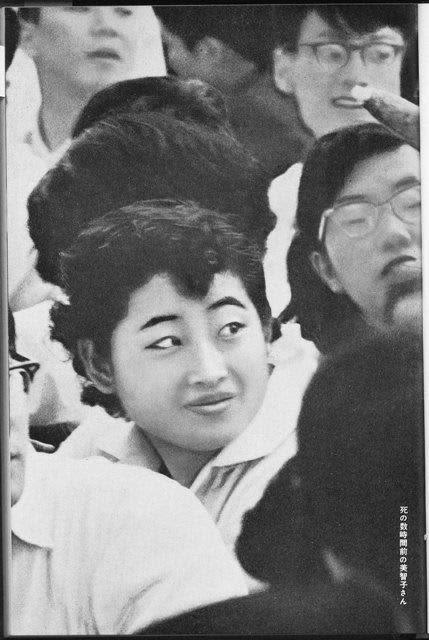
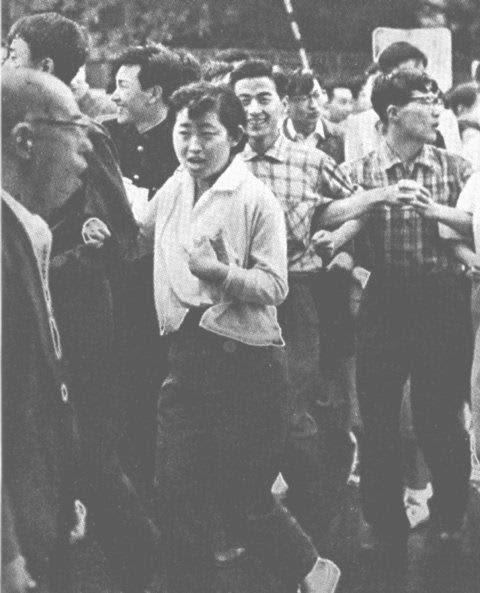

Michiko Kanba (樺 美智子, Kanba Michiko, November 8, 1937 – June 15, 1960) was a Japanese communist, University of Tokyo undergraduate, and a Zengakuren activist. She died in clashes between demonstrators and police at the South Gate of the National Diet Building in central Tokyo at the climax of the 1960 Anpo Protests against the US-Japan Security Treaty.
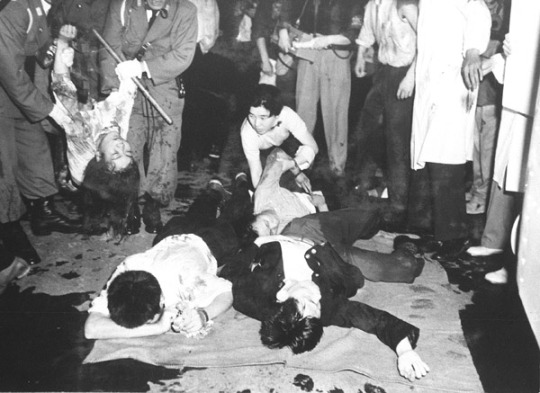
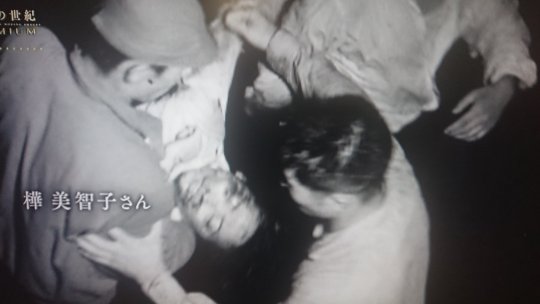
Kanba's death was widely covered at the time, and is seen as a symbol of the 1960 mass protests against the revised Treaty of Mutual Cooperation and Security Between the United States and Japan. Historian Nick Kapur argues that nationwide shock at Kanba's death helped force the resignation of Prime Minister Nobusuke Kishi and the cancellation of a planned visit to Japan by U.S. President Dwight D. Eisenhower.[8] Kapur says Kanba's death was viewed as a "triple tragedy," first because she was so young, second because she was a student at Japan's most elite university, and third, because she was a woman, at a time when it was still novel for women to participate on the front lines of street protests.

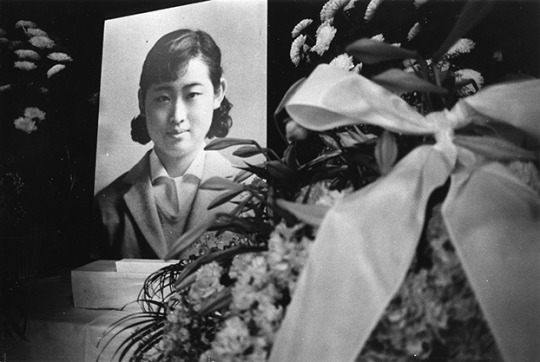

#Jun.15.1960#date of death#Michiko Kanba#樺美智子#University of Tokyo#Zengakuren#60年安保#Anpo protests#history today
2 notes
·
View notes
Photo

安倍晋三氏、 米タイム誌表紙に 7月15日発行の次回号 In memories of Shinzo ABE Address by Prime Minister Shinzo Abe to a Joint Meeting of the U.S. Congress "Toward an Alliance of Hope" (April 29, 2015) (which was during the Obama administration) Mr. Speaker, Mr. Vice President, distinguished members of the Senate and the House, distinguished guests, ladies and gentlemen, Back in June, 1957, Nobusuke Kishi, my grandfather, standing right here, as Prime Minister of Japan, began his address, by saying, and I quote, "It is because of our strong belief in democratic principles and ideals that Japan associates herself with the free nations of the world." 58 years have passed. Today, I am honored to stand here as the first Japanese Prime Minister ever to address your joint meeting. I extend my heartfelt gratitude to you for inviting me. I have lots of things to tell you. But I am here with no ability, nor the intention, ....to filibuster. https://www.mofa.go.jp/na/na1/us/page4e_000241.html #安倍晋三 #ShinzoABE https://www.instagram.com/p/Cfx9CqZveRx/?igshid=NGJjMDIxMWI=
3 notes
·
View notes